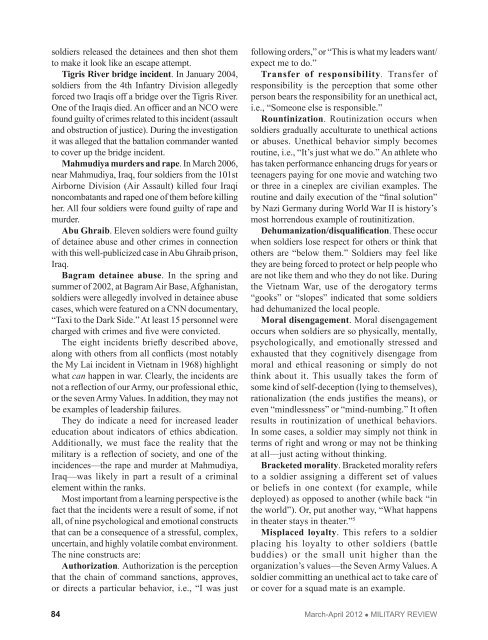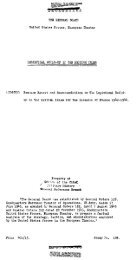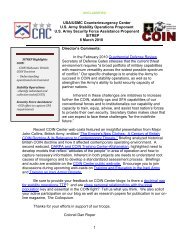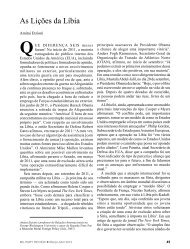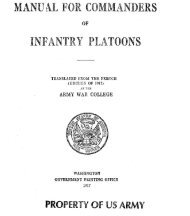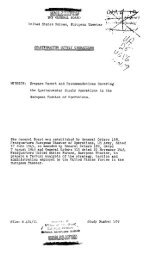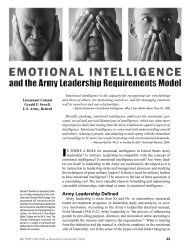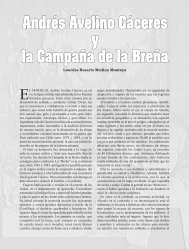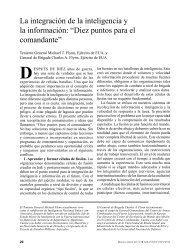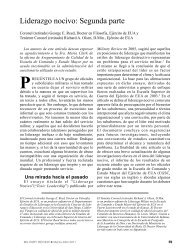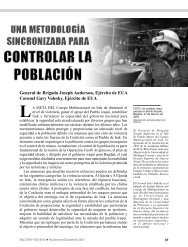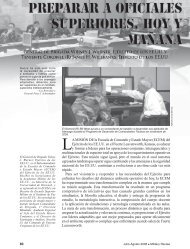Joe Doty - US Army Combined Arms Center and Fort Leavenworth
Joe Doty - US Army Combined Arms Center and Fort Leavenworth
Joe Doty - US Army Combined Arms Center and Fort Leavenworth
Create successful ePaper yourself
Turn your PDF publications into a flip-book with our unique Google optimized e-Paper software.
soldiers released the detainees <strong>and</strong> then shot them<br />
to make it look like an escape attempt.<br />
Tigris River bridge incident. In January 2004,<br />
soldiers from the 4th Infantry Division allegedly<br />
forced two Iraqis off a bridge over the Tigris River.<br />
One of the Iraqis died. An officer <strong>and</strong> an NCO were<br />
found guilty of crimes related to this incident (assault<br />
<strong>and</strong> obstruction of justice). During the investigation<br />
it was alleged that the battalion comm<strong>and</strong>er wanted<br />
to cover up the bridge incident.<br />
Mahmudiya murders <strong>and</strong> rape. In March 2006,<br />
near Mahmudiya, Iraq, four soldiers from the 101st<br />
Airborne Division (Air Assault) killed four Iraqi<br />
noncombatants <strong>and</strong> raped one of them before killing<br />
her. All four soldiers were found guilty of rape <strong>and</strong><br />
murder.<br />
Abu Ghraib. Eleven soldiers were found guilty<br />
of detainee abuse <strong>and</strong> other crimes in connection<br />
with this well-publicized case in Abu Ghraib prison,<br />
Iraq.<br />
Bagram detainee abuse. In the spring <strong>and</strong><br />
summer of 2002, at Bagram Air Base, Afghanistan,<br />
soldiers were allegedly involved in detainee abuse<br />
cases, which were featured on a CNN documentary,<br />
“Taxi to the Dark Side.” At least 15 personnel were<br />
charged with crimes <strong>and</strong> five were convicted.<br />
The eight incidents briefly described above,<br />
along with others from all conflicts (most notably<br />
the My Lai incident in Vietnam in 1968) highlight<br />
what can happen in war. Clearly, the incidents are<br />
not a reflection of our <strong>Army</strong>, our professional ethic,<br />
or the seven <strong>Army</strong> Values. In addition, they may not<br />
be examples of leadership failures.<br />
They do indicate a need for increased leader<br />
education about indicators of ethics abdication.<br />
Additionally, we must face the reality that the<br />
military is a reflection of society, <strong>and</strong> one of the<br />
incidences—the rape <strong>and</strong> murder at Mahmudiya,<br />
Iraq—was likely in part a result of a criminal<br />
element within the ranks.<br />
Most important from a learning perspective is the<br />
fact that the incidents were a result of some, if not<br />
all, of nine psychological <strong>and</strong> emotional constructs<br />
that can be a consequence of a stressful, complex,<br />
uncertain, <strong>and</strong> highly volatile combat environment.<br />
The nine constructs are:<br />
Authorization. Authorization is the perception<br />
that the chain of comm<strong>and</strong> sanctions, approves,<br />
or directs a particular behavior, i.e., “I was just<br />
following orders,” or “This is what my leaders want/<br />
expect me to do.”<br />
Transfer of responsibility. Transfer of<br />
responsibility is the perception that some other<br />
person bears the responsibility for an unethical act,<br />
i.e., “Someone else is responsible.”<br />
Rountinization. Routinization occurs when<br />
soldiers gradually acculturate to unethical actions<br />
or abuses. Unethical behavior simply becomes<br />
routine, i.e., “It’s just what we do.” An athlete who<br />
has taken performance enhancing drugs for years or<br />
teenagers paying for one movie <strong>and</strong> watching two<br />
or three in a cineplex are civilian examples. The<br />
routine <strong>and</strong> daily execution of the “final solution”<br />
by Nazi Germany during World War II is history’s<br />
most horrendous example of routinitization.<br />
Dehumanization/disqualification. These occur<br />
when soldiers lose respect for others or think that<br />
others are “below them.” Soldiers may feel like<br />
they are being forced to protect or help people who<br />
are not like them <strong>and</strong> who they do not like. During<br />
the Vietnam War, use of the derogatory terms<br />
“gooks” or “slopes” indicated that some soldiers<br />
had dehumanized the local people.<br />
Moral disengagement. Moral disengagement<br />
occurs when soldiers are so physically, mentally,<br />
psychologically, <strong>and</strong> emotionally stressed <strong>and</strong><br />
exhausted that they cognitively disengage from<br />
moral <strong>and</strong> ethical reasoning or simply do not<br />
think about it. This usually takes the form of<br />
some kind of self-deception (lying to themselves),<br />
rationalization (the ends justifies the means), or<br />
even “mindlessness” or “mind-numbing.” It often<br />
results in routinization of unethical behaviors.<br />
In some cases, a soldier may simply not think in<br />
terms of right <strong>and</strong> wrong or may not be thinking<br />
at all—just acting without thinking.<br />
Bracketed morality. Bracketed morality refers<br />
to a soldier assigning a different set of values<br />
or beliefs in one context (for example, while<br />
deployed) as opposed to another (while back “in<br />
the world”). Or, put another way, “What happens<br />
in theater stays in theater.” 5<br />
Misplaced loyalty. This refers to a soldier<br />
placing his loyalty to other soldiers (battle<br />
buddies) or the small unit higher than the<br />
organization’s values—the Seven <strong>Army</strong> Values. A<br />
soldier committing an unethical act to take care of<br />
or cover for a squad mate is an example.<br />
84 March-April 2012 • MILITARY REVIEW


